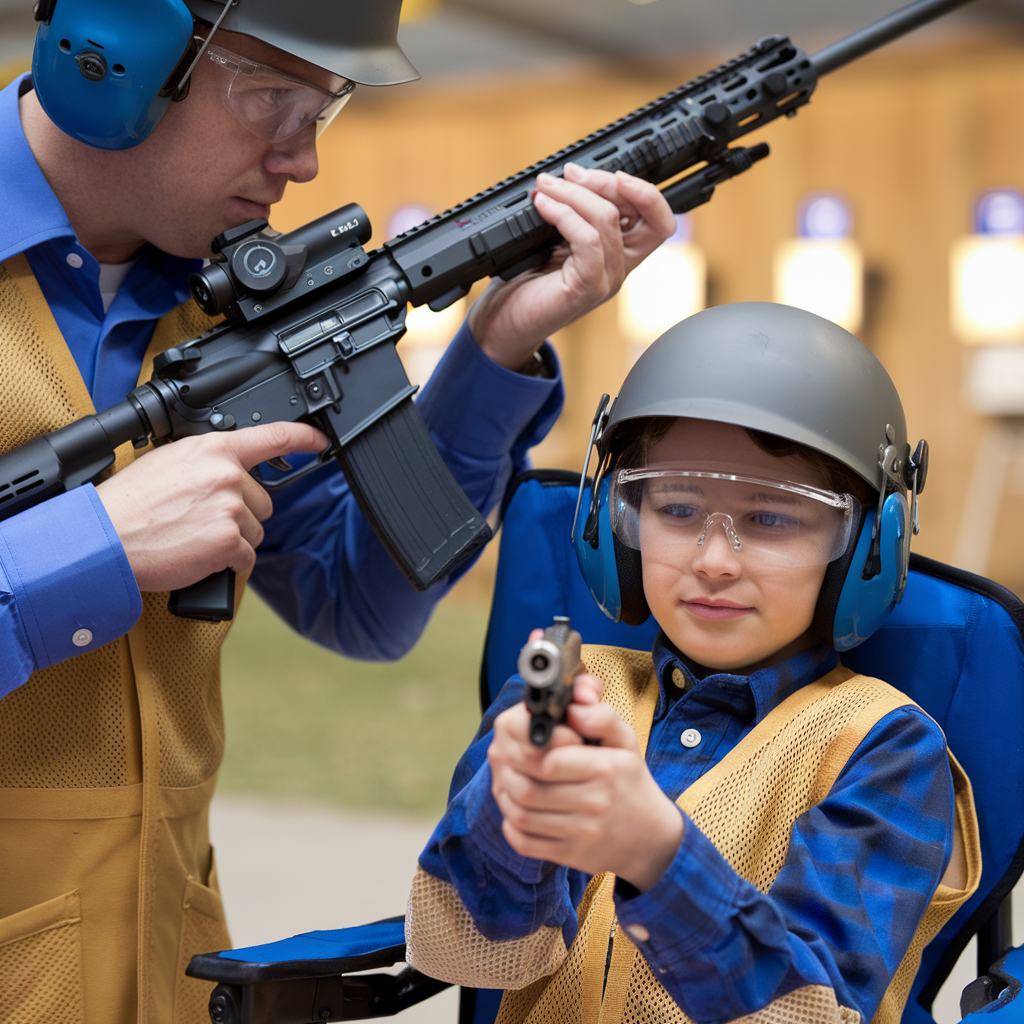How to Introduce Kids to Firearm Safety

Introducing kids to firearm safety is an essential step in fostering a strong understanding of responsible gun ownership. Whether you’re a parent, guardian, or mentor, teaching gun safety early can help build a foundation of trust and awareness that will serve your child for a lifetime. This guide outlines practical ways to bring firearm safety into your children’s lives in a meaningful, age-appropriate, and approachable manner.
Why Firearm Safety Matters for Kids
Guns are a common part of many households and communities in the United States. Teaching kids firearm safety equips them with the knowledge to handle potential encounters responsibly. Addressing the topic early helps prevent accidents, promotes respect for firearms, and clears up misconceptions.
Children are naturally curious. If they encounter a firearm without proper safety knowledge, they may inadvertently put themselves or others at risk. Educating them emphasizes responsibility while reducing fear and fostering respect.
When to Start Teaching Firearm Safety
The right time to introduce firearm safety depends largely on your child’s maturity level. For some, that might be as young as five or six years old, while for others, it may be later. Gauge your child’s ability to listen, follow instructions, and understand serious topics before beginning.
Early lessons don’t have to involve complex concepts. Instead, keep it simple, focusing on the basics:
- “Stop, don’t touch, leave the area, and tell an adult” if they encounter a firearm unsupervised.
- The concept that guns are not toys and should always be treated with caution.
Age-Appropriate Methods for Teaching Firearm Safety
For Young Children
For ages 5-10, the most effective teaching methods revolve around repetition and straightforward language. Highlight the importance of not touching firearms they find and alerting a trusted adult. You can use role-playing exercises to reinforce this.
Example: Act out scenarios where a child discovers a firearm, guiding them through the correct steps to ensure safety.
For Pre-Teens
As kids grow older, their ability to grasp more detailed concepts increases. For children between 10 and 13 years old, introduce them to the basics of how firearms work, if you deem they are ready. Explain rules like:
- Always keep the muzzle pointed in a safe direction.
- Never point a gun at anything you don’t intend to shoot.
- Keep your finger off the trigger until ready to shoot.
- Always assume the gun is loaded.
At this stage, supervised, hands-on lessons can play a key role in building trust and experience.
For Teenagers
With teenagers, you can delve into more advanced firearm education. Discuss the legal and ethical responsibilities of owning firearms. Focus on situational awareness, safe handling practices, and how to secure guns properly in the home.
Encourage discussions about what they’ve seen or heard about guns in media or among peers. This ensures they understand the serious nature of firearm use versus fictional portrayals of guns.
Establishing House Rules About Firearms
To reinforce firearm safety in the home, establish clear rules that all household members, including children, should abide by:
- Firearms are stored in a locked safe or gun cabinet when not in use.
- Ammunition is stored separately from firearms.
- Supervised access only — children should never handle firearms without an adult present.
- Open communication about firearms. Encourage kids to ask questions whenever they are unsure.
Having consistent rules and routines demonstrates your commitment to safety and helps establish a reliable framework for your kids to follow.
Resources for Teaching Firearm Safety
Leverage reputable resources and organizations dedicated to gun safety education to supplement your lessons. Some excellent programs and tools include:
- National Rifle Association (NRA): The NRA’s Eddie Eagle GunSafe® program teaches kids what to do if they encounter a firearm in an unsupervised setting.
- 4-H Shooting Sports Program: Offers supervised, educational opportunities for older kids to practice safe firearm use in a controlled environment.
- Local Gun Ranges: Many ranges offer youth training courses or beginner safety classes that cater to children and teens.
Make sure to vet any program or instructor to ensure they align with your values and expectations.
Building Confidence Through Practical Exposure
Once your child is old enough and shows readiness, practical exposure to firearms in a safe, supervised environment can enhance their understanding. Start with low-recoil firearms or airsoft guns to teach critical skills like aiming, trigger discipline, and proper handling.
This hands-on experience can demystify firearms and strip away unwarranted fears. With each lesson, emphasize that safety is the number one priority. Ensure they leave each session feeling more knowledgeable and confident.
Using Open Communication to Reinforce Lessons
Your kids’ understanding of firearm safety will deepen if you maintain an open and honest dialogue. Encourage them to ask questions and clarify any doubts. Share stories or examples that illustrate responsible and irresponsible behaviors involving firearms, tailored to their level of maturity.
For example, highlight how proper gun storage in your household keeps everyone safe. Or, if appropriate, share a real-life story to underline the importance of responsible behavior around firearms.
Conclusion
Teaching kids firearm safety is about more than just reducing risks — it’s about empowering them with knowledge and responsibility. By taking age-appropriate steps and maintaining communication, you can introduce your child to firearms safely and effectively.
As a firearm owner or enthusiast, you understand the value of responsible gun handling. Share this knowledge with your kids to help them grow into informed individuals who respect the role firearms play in your household and society.
Start today by having an open conversation, setting clear rules, and introducing firearm safety basics. The earlier you begin, the greater their understanding and respect for firearms will be.
Related Content: 10 Essential Gun Safety Tips | Firearm Storage Options for Homes With Kids



